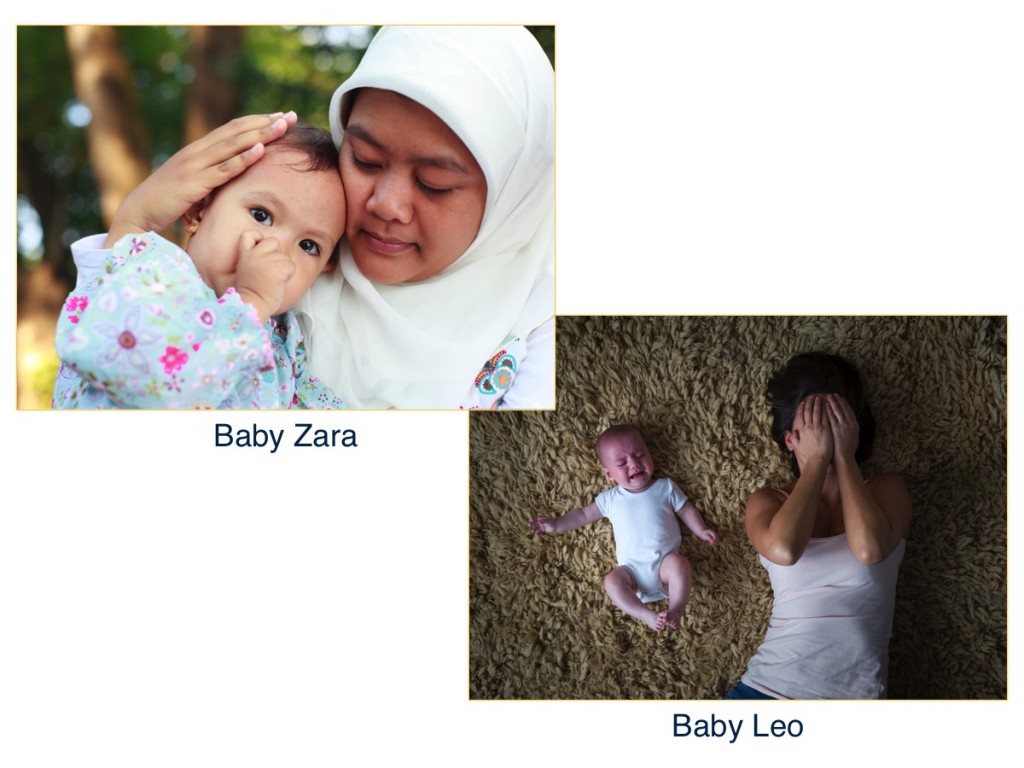
Both the caregiver and the child contribute to the attachment relationship. Attachment is a dyadic relationship. In the module “Development of Attachment,” we discussed how child and family factors influence attachment. But caregivers also play an important role in the quality of attachment. How does caregiving influence children’s attachment security? What behaviors do infants use to maximize the responsiveness of their caregivers? How can we identify them?
Babies form emotional bonds with their caregivers during the four phases of attachment development. From these bonds, they form expectations about relationships. In relationships, a child bases his expectations on his interpretation of his early interactions. The child creates a set of expectations, attitudes, and feelings about how people will act. Will the parent provide support during stressful events? Does the baby feel worthy of receiving help?
For example, look at baby Zara in the picture on the left. Zara fell down and was crying. Her mother immediately picked her up to comfort her. Zara has calmed in her mother’s arms. Zara’s parents respond to her signals in a consistent and sensitive way. She is likely to see herself as being lovable and competent. If Zara’s parents continue to support her, she will be more likely to have positive relationships as an adult.
Now look at baby Leo in the picture on the right. Leo is also upset, but his mother ignores his cries. Leo experiences repeated rejection. His parents show him less support and Leo may form negative expectations about relationships. He may see himself as unlovable, unworthy, and incompetent. As an adult, he may have negative views about relationships with others.
Our expectations about relationships can change over time. They are constantly evolving. Cognitive and emotional development and new social experiences can change these views.
-
- Interactional synchrony
- caregivers and infants respond to each other in a reciprocal and rhythmic manner